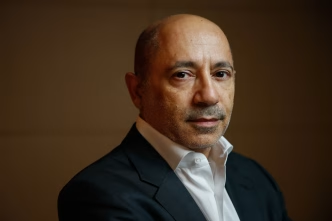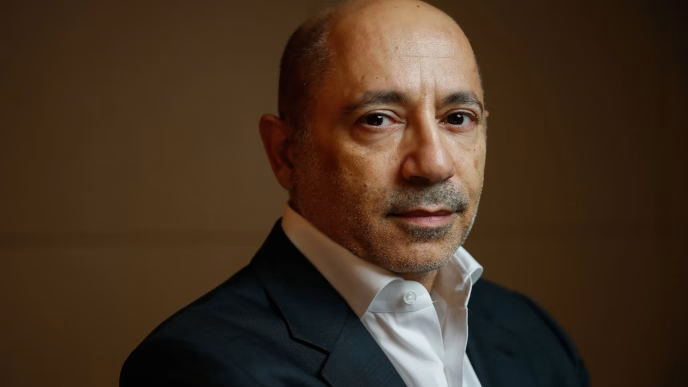Meta Platforms Inc. has announced a new partnership with Midjourney, one of the leading independent artificial intelligence (AI) labs specializing in generative image technology. Under the agreement, Meta will license Midjourney’s AI tools and underlying models to integrate them into its suite of consumer and enterprise products, marking a major step in its ongoing drive to dominate the AI ecosystem.
A Strategic Alliance in the Generative AI Race
The deal signals Meta’s intent to strengthen its capabilities in generative AI at a time when rivals like OpenAI, Google, and Anthropic are rapidly advancing in the space. While Meta has developed its own large language models (LLMs), including the open-source LLaMA family, the company has lagged in building widely adopted consumer-facing image-generation products.
By partnering with Midjourney, Meta gains access to one of the most recognized brands in AI art and creativity. Midjourney, which operates primarily through Discord and boasts a vibrant community of millions of users, is known for producing highly stylized and visually striking imagery that has become a cultural touchstone in the AI art movement.
What the Partnership Covers
While financial details of the agreement have not been disclosed, sources familiar with the matter indicate the deal covers both licensing of Midjourney’s proprietary model and co-development of new generative capabilities. The partnership could allow Meta to:
- Integrate Midjourney AI into Meta’s apps: Tools for AI-generated images could soon appear across Instagram, Facebook, and WhatsApp, enabling users to create custom content directly within social media platforms.
- Expand enterprise offerings: Meta’s Workplace suite and future AR/VR environments may adopt Midjourney technology to generate assets, designs, and virtual worlds on demand.
- Enhance advertising tools: Brands could leverage Midjourney’s capabilities to create visuals tailored for ad campaigns, potentially reshaping Meta’s multi-billion-dollar advertising business.
Why Midjourney?
Midjourney has distinguished itself in a crowded AI field by combining artistic fidelity with accessibility. Unlike many AI labs focused on technical research, Midjourney has cultivated an engaged, creative community that shares and iterates on each other’s work.
For Meta, tapping into Midjourney offers not just technology but also cultural capital. Incorporating Midjourney’s visual style and brand could help Meta attract younger, digitally savvy users while giving creators new tools to experiment with.
The Competitive Context
The tie-up comes as Big Tech companies increasingly look to secure partnerships with smaller but innovative AI labs:
- Microsoft has invested billions in OpenAI to bring ChatGPT and DALL·E into its products.
- Google has backed Anthropic while also advancing its in-house Gemini models.
- Amazon has partnered with Anthropic to bring AI models into its cloud services.
Meta’s deal with Midjourney highlights a different approach—partnering not with a text-first model lab but with one that has excelled in creative, visual AI applications.
Challenges and Questions
Despite the promise, challenges remain:
- Integration risks: Midjourney’s technology is currently accessed primarily via Discord, while Meta will need to scale it for billions of users across its platforms.
- Copyright concerns: Generative AI remains mired in legal disputes over whether training data scraped from the internet infringes on artists’ intellectual property. Meta and Midjourney could face lawsuits if commercial use expands.
- User trust: Meta’s reputation on privacy and content moderation could complicate adoption of AI-generated imagery, especially if tools are misused for misinformation or harmful content.
Industry Reactions
Industry analysts see the partnership as both defensive and offensive. On one hand, Meta is filling a gap in its portfolio by licensing best-in-class technology rather than reinventing it in-house. On the other, it positions Meta to lead in the commercialization of generative visuals at scale, especially given its social media dominance.
Creative professionals are divided: some welcome the prospect of more powerful, accessible tools, while others fear AI-generated content will further disrupt industries like design, illustration, and advertising.
A Step Toward the Metaverse Vision
Ultimately, the Midjourney deal aligns with Meta CEO Mark Zuckerberg’s long-term vision of the “metaverse.” Generative AI could become a critical engine for creating immersive environments, avatars, and digital objects at scale. By combining Midjourney’s artistic strengths with Meta’s vast distribution platforms, the partnership could accelerate the blending of AI creativity with social interaction in both 2D apps and future 3D worlds.
Conclusion
The Meta–Midjourney partnership marks one of the most significant alliances yet in the generative AI sector. For Meta, it is a calculated move to catch up in the AI race, expand its creative toolkit, and reinforce its ambitions in the metaverse. For Midjourney, the deal offers global reach far beyond Discord, potentially transforming it from a niche creative community into a household name integrated into apps used by billions.
Whether the partnership ushers in a new wave of accessible creativity or sparks new controversies over AI art remains to be seen—but it underscores the growing power of generative AI as the next frontier in digital technology.
















